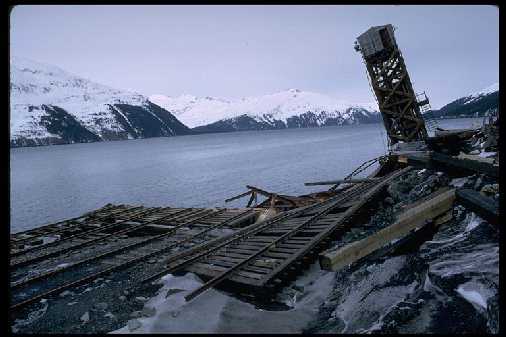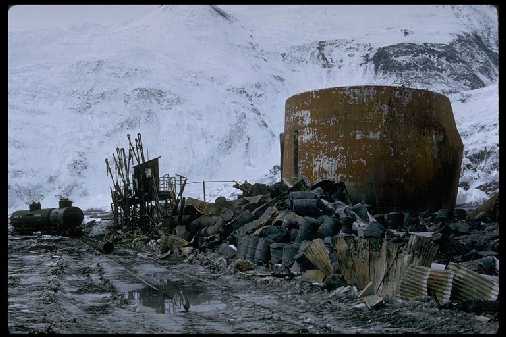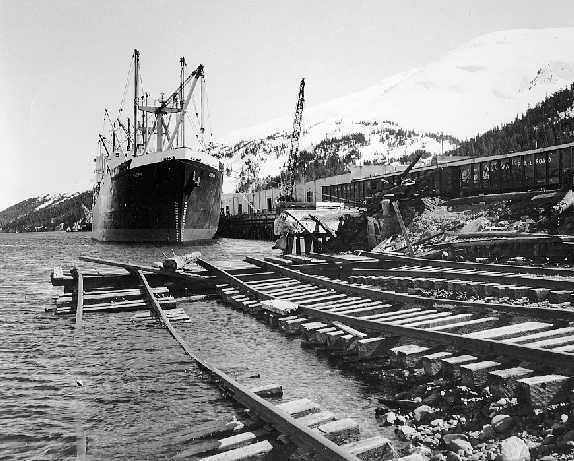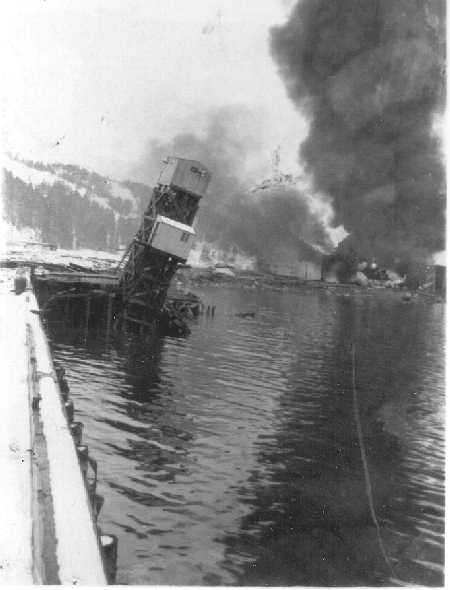

"The smaller port of Whittier was beyond immediate use. Our other port facility located at Whittier was considerably closer to the epicenter of the earthquake and suffered the same sequence of forces and subsequent damage, but with some exceptions. There, we lost the new car barge slip which provided direct rail car service with the Lower 48. One wing of the depot building was wiped cleanly away by a 30' tidal wave but the rest of the structure, including living quarters, survived relatively intact. Although covered with debris, the Whittier yard also remained relatively intact, primarily because it lay further back from the shore line. The marginal wharf and transit shed under lease to the Railroad were heavily damaged but were capable of being placed in service after heavy repairs were made." [5]
| The huge underwater landslide (approximately 2,000,000 cubic yards) occurred at the head of Passage Canal and generated a hugh tsunami. "At Whittier the waves destroyed two saw mills; the Union Oil Company tank farm, wharf and buildings; the Alaska Railroad depot; numerous frame dwellings; and the railroad ramp handling towers at the army pier." [2] "The force of the initial surge wave drove a wooden plank straight through a truck tire." [1] |
 Photo from Earth Science Photographs from USGS Library |

Steinbrugge Collection, Earthquake Engineering Research Center, University of California, Berkeley 4/4/64 |
Earthquake generated waves damage to docks. Soils washed away by the water. Steel sheet piling. |
| Fire damage at right. | 
Steinbrugge Collection, Earthquake Engineering Research Center, University of California, Berkeley 4/4/64 |

Anchorage Museum of History and Art |
The new car barge slip which provided access to the lower 48 states was almost a total loss. |
| Heavy damage and fire at Whittier. | 
Anchorage Museum of History and Art |
earthquake main | earthquake
story | information credits |
ARR
main page
The information on this page was last updated November 24, 1998